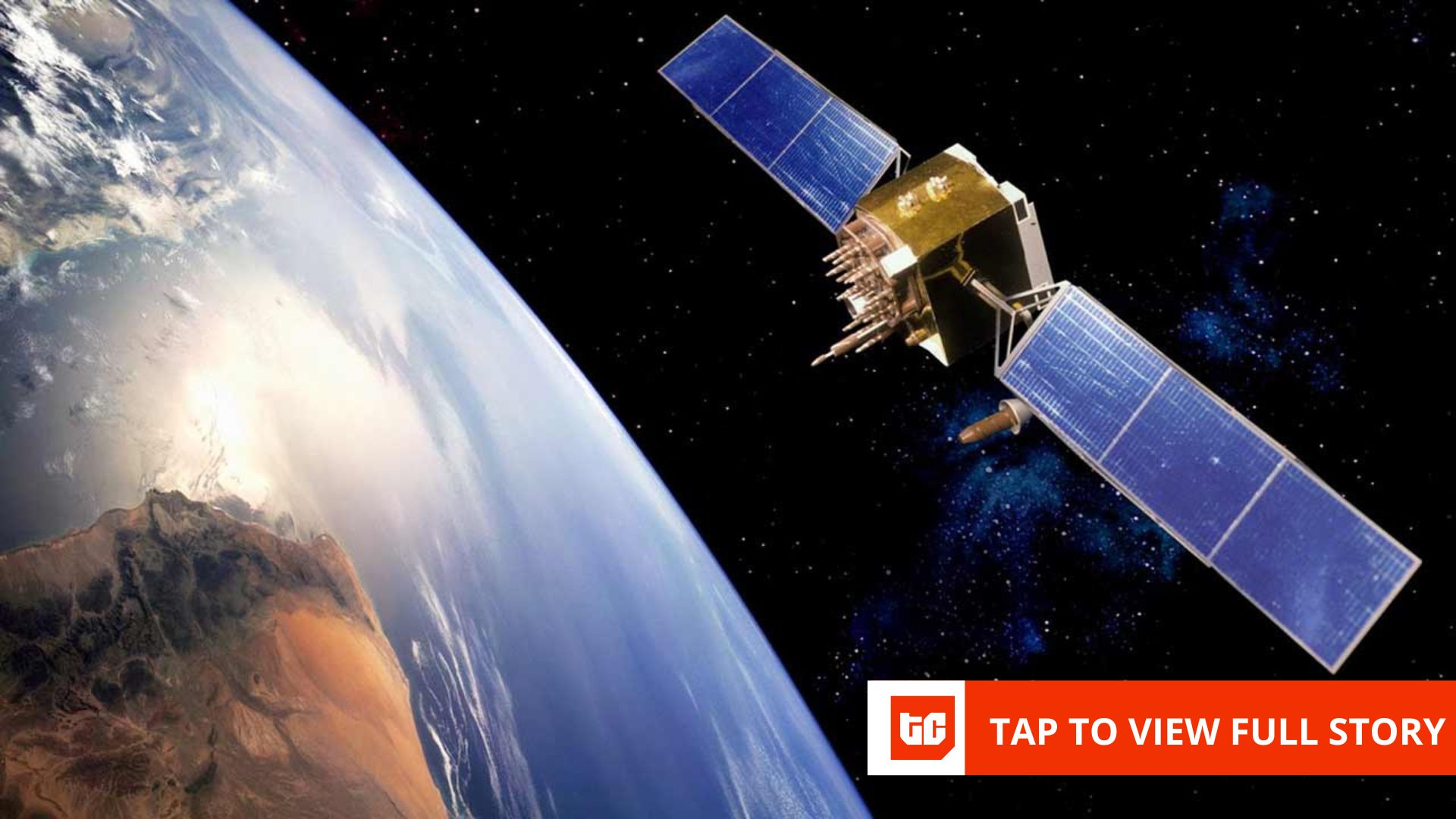Nigeria has shifted its timeline for replacing its ageing national satellite, NigComSat-1R, to 2028, three years later than initially planned, as it looks to strengthen its position in West Africa’s growing digital market. The NigComSat-1R, launched in December 2011, is nearing the end of its lifespan after more than a decade of service. Built in China with a 15-year design cycle, the satellite is running low on fuel, prompting urgent plans for its successor.
Stretching NigComSat-1R to its limits
NigComSat-1R, weighing 5,150kg and equipped with 28 active transponders (plus 12 backups), was built for a 15-year lifespan, which would have ended around 2026. However, through careful fuel management—using propellant sparingly and efficiently for orbit corrections—its operational life has been extended until 2028.
“A geostationary satellite typically lasts 15 to 20 years,” Jane Nkechi Egerton-Idehen, Managing Director and CEO of Nigerian Communications Satellite Limited (NigComSat), told in an interview on Tuesday. “It depends on your propellant—the equivalent of gas in your car. Because we’ve managed it well, we can keep this satellite running until 2028. Our ultimate goal is to have a replacement in place by then.”
Satellites don’t stop working the moment they reach their design lifespan; however, reliability declines as fuel reserves dwindle, solar panels and electronics degrade, and backup systems are exhausted. Many continue to operate for years beyond expectations, though with a greater risk of weaker signals, service interruptions, or sudden failure—hence the need for early replacement planning.
In the meantime, NigComSat is not relying solely on its ageing asset. The government agency has signed partnerships with international operators such as Eutelsat and OneWeb to provide “gap filler” services, shifting traffic when necessary to maintain service for Nigerian customers.
Replacing a satellite is usually a long process, often taking four to six years from choosing a vendor to completing design, construction, and launch. For example, the EUTELSAT 36D satellite took about three years: Eutelsat signed a deal with Airbus in March 2021, and after going through design, building, and testing, the satellite was launched and entered service in March 2024. But Egerton-Idehen believes Nigeria can move faster. “Technology has evolved. We started this journey back in 2019, so a lot of work has been done. Our timeline is now 30 to 36 months,” she said.
NigComSat is now in the final stages of vendor assessment, moving from technical due diligence to financial negotiations.
What the old satellite has achieved
Despite its age, NigComSat-1R has remained central to Nigeria’s digital infrastructure. Its multiple frequency bands—Ka, Ku, C, and L—support a wide range of services spanning broadcasting, broadband, and specialised communications.
In broadcasting, the Ku-band has been the workhorse. It carries traffic for the Nigerian Television Authority (NTA), the National Broadcasting Commission (NBC), and more than 100 other broadcasters nationwide. Under current leadership, utilisation of this band has climbed from about 35 percent to over 75 percent, solidifying NigComSat’s dominance in this space.
“We use them, mostly for broadcast,” said an executive of a broadcast company that has used the NigComSat-1R since 2015, and wanted to remain anonymous to speak freely. “We think it cannot be used too much for broadband purposes, because it is a geo satellite, there’s not much capacity you can squeeze out, even though there’s a massive improvement in technology.”
Broadband, delivered primarily through the Ka-band, has also played a growing role, especially in reaching rural and underserved communities. Partnerships with local operators have widened coverage, while initiatives like Hotspot’s 102 rural sites in Nasarawa have connected around 300,000 people who previously had little or no access to the internet.
Yet the satellite’s limitations are clear. NigComSat-1R offers about 1.5 GHz of total transponder bandwidth across all its bands—capacity that must be shared between broadcasting, VSAT, government, military, navigation overlay, and broadband services. This means the quality of service is constrained.
Latency is another challenge: NigComSat-1R, as a geostationary satellite, operates at roughly 600 milliseconds, compared to Starlink’s 25–60 milliseconds via its low-earth orbit constellation. For latency-sensitive uses like video calls, gaming, and real-time collaboration, the difference is stark.
“The reality is that Nigeria’s needs for satellite services—whether for security, internet, or broadcast—have grown exponentially. NigComSat’s current capacity simply has to be expanded to meet that demand,” said Diseye Isoun, CEO of Content Oasis, an internet service provider.
Egerton-Idehen concedes that Ka-band utilisation has lagged behind expectations. At the time of her appointment in October 2023, usage was at zero. Nearly two years later, it has only risen to about 7%. “We want to bring that up. We need to hit about 60 to 70% utilisation,” she said. “There’s a lot of focus on broadband projects. It takes a longer lead time to close at scale, but it will allow us to deploy in bulk rather than bit by bit.”
Beyond broadcast and broadband, NigComSat also provides specialised services for defence, navigation, and private networks serving ministries, security agencies, and enterprises. These high-value contracts, often priced at a premium, have become a reliable revenue stream.
Still, broadcasting remains NigComSat’s strongest segment, especially since competitors like Starlink do not offer broadcast services. But the company increasingly sees broadband as the true long-term growth driver. With national broadband penetration still below 50 percent, demand is expected to rise sharply, powered by individuals as well as industries adopting technologies such as Internet of Things, smart agriculture, and digital public services.
Financing the replacement
One of the thorniest challenges is funding. NigComSat-1R was financed through a $250 million arrangement with China’s Exim Bank, with Nigeria providing $50 million counterpart funding. That model worked at the time, but it is no longer the only option.
“This time, the process is open,” Egerton-Idehen said. “We have several vendors and several investors bidding. It’s not as closed as before. It shows the faith in our market and the competence we’ve built over the past two decades.”
Much of the financing will likely come through export-credit agencies backed by national governments, supported later by commercial banks. It’s a complex process, she admits, but investor interest has been strong, partly because NigComSat has proven it can deliver.
Nigeria’s experience with NigComSat-1, the ill-fated predecessor that failed after 18 months in orbit due to solar array problems, was a painful lesson. But NigComSat-1R has provided more than a decade of stable service, proving that Nigeria can operate at this level.
Safeguarding orbital slots
Beyond funding, there is another race underway: protecting Nigeria’s orbital slots. These are scarce positions in geostationary orbit assigned by the International Telecommunication Union (ITU). Losing them could mean losing Nigeria’s place in space.
“Nigeria has three orbital slots. We’re using one with our current satellite, but we must ensure we don’t lose the other two,” Egerton-Idehen said. “The original plan was to have three satellites in space by now. We’re working hard to ensure those resources are not lost.”
A bigger vision: West Africa and beyond
Perhaps the most ambitious aspect of NigComSat’s strategy is its regional vision. With NigComSat-1R already covering sub-Saharan Africa, Europe, and parts of Asia, Nigeria is positioning itself as a natural hub for satellite communications in West Africa.
“No other West African country has its own communications satellite. We are the only ones, apart from a regional player called Rascom,” said Egerton-Idehen. “That gives us a unique opportunity to dominate the broadcast and broadband markets in the region.”
For investors, this scale makes NigComSat more than just a domestic utility. It recasts the company as a potential continental player, able to deliver services beyond Nigeria to markets that lack their own space infrastructure.
Yet questions remain about how the new satellite is being planned. Some industry stakeholders argue that NigComSat has not engaged enough with its key clients, who could help shape the design to better reflect market needs.
“Unfortunately, there hasn’t been much consultation, and that’s where I think NigComSat is making mistakes—they are the operators, but not the users,” an executive at a broadcast company told . “End-users know what sells and what the market requires. They would do better to seek advice, so that the shortcomings of the current satellite—whether in orbital positioning or coverage areas—are avoided in the new design.”
Mark your calendars! Moonshot by is back in Lagos on October 15–16! Meet and learn from Africa’s top founders, creatives & tech leaders for 2 days of keynotes, mixers & future-forward ideas. Get your tickets now: moonshot..com











